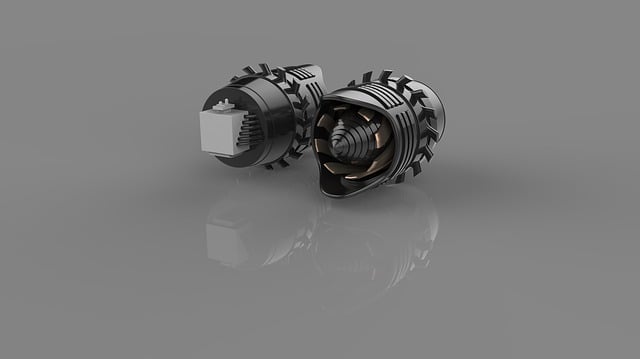To pursue an aerospace engineering degree, students should:
1. Assess interest and aptitude through past experiences and academic achievements, focusing on math and science skills.
2. Prioritize excellence in core subjects like algebra, geometry, trigonometry, physics, and chemistry.
3. Engage in supplementary activities to sharpen critical thinking and problem-solving skills.
4. Take challenging math and science courses in high school, explore related fields, and participate in extracurricular activities fostering creativity and analytical thinking.
5. Build hands-on experience through STEM projects, internships, and design challenges.
6. Familiarize yourself with industry software like AutoCAD, SolidWorks, ANSYS, and Abaqus.
7. Develop strong problem-solving and critical thinking skills through challenging courses and competitions.
8. Cultivate habits of questioning and exploring diverse perspectives through wide reading.
9. Hone collaboration and communication skills through group projects, science clubs, community service, and mentorship from professionals.
Embarking on a degree in aerospace engineering requires more than just a passing interest; it demands a well-prepared mind equipped with the right tools. This comprehensive guide is designed to equip aspiring engineers with the essential skills, knowledge, and resources needed for success. From assessing your aptitude to cultivating teamwork abilities, these 10 tips will serve as your roadmap from high school to university, ensuring you’re ready to conquer the challenges of aerospace studies. Let’s begin your journey towards becoming an aerospace engineering powerhouse!
- Assess Your Interest & Aptitude for Aerospace Engineering
- Strengthen Math & Science Foundations Early On
- Take Challenging High School Courses Relevant to Aerospace
- Build Hands-On Experience through Projects & Internships
- Familiarize Yourself with Industry Software and Tools
- Develop Strong Problem-Solving and Critical Thinking Abilities
- Cultivate Collaboration and Communication Skills for Teamwork
Assess Your Interest & Aptitude for Aerospace Engineering

Before diving into your aerospace engineering degree, it’s crucial to assess whether this field aligns with your interests and aptitudes. Aerospace engineering is a highly specialized and demanding discipline that requires a unique blend of technical skills, analytical thinking, and problem-solving abilities. If you’re fascinated by the intricacies of aircraft design, rocket science, or space exploration, and enjoy tackling complex mathematical and scientific challenges, then aerospace engineering might be the right path for you.
Consider your past experiences and academic achievements. Have you taken advanced math and science courses? Do you excel in physics, chemistry, or computer programming? These subjects form the backbone of an aerospace engineering education. Additionally, look for opportunities to engage with hands-on projects, such as building model rockets, participating in robotics competitions, or joining science clubs. These experiences can help you gauge your passion for aerospace engineering and prepare you for the rigorous academic demands ahead.
Strengthen Math & Science Foundations Early On

Building a solid foundation in mathematics and science is paramount when preparing for a degree in Aerospace Engineering. High school students aspiring to pursue this field should focus on excelling in core subjects like algebra, geometry, trigonometry, physics, and chemistry. These foundational courses provide the critical thinking and problem-solving skills essential for tackling complex engineering concepts later on.
Encourage early learners to go beyond the curriculum by engaging in supplementary activities such as math competitions, science fairs, or online tutorials. Strengthening these fundamental skills not only enhances academic performance but also fosters a passion for understanding intricate scientific principles, which is the bedrock of Aerospace Engineering.
Take Challenging High School Courses Relevant to Aerospace

To set yourself on the right path for aerospace engineering, take challenging high school courses that align with this field. Focus on math and science subjects like calculus, physics, and advanced placement (AP) computer science. These courses provide a solid foundation in problem-solving, critical thinking, and mathematical modeling—essential skills for aerospace engineers. Additionally, consider exploring specific areas of interest within aerospace through related courses, such as astronomy or mechanical engineering.
Beyond academics, engage with resources that foster creativity and analytical thinking, like robotics clubs or advanced design projects. These experiences offer hands-on learning opportunities and help you apply theoretical knowledge to practical challenges—a valuable preparation step for the rigorous coursework ahead in university.
Build Hands-On Experience through Projects & Internships

Building hands-on experience is invaluable when preparing for a degree in Aerospace Engineering. High school students should start by engaging in STEM projects, both independently and through school programs, to foster their problem-solving and critical thinking skills. These projects can range from simple rocket launches or drone programming to more complex design challenges, offering a practical understanding of aerospace principles.
Internships with local aerospace companies, research labs, or even NASA’s educational outreach programs provide real-world exposure. Students can learn about aircraft manufacturing, flight simulations, or satellite technology while gaining valuable industry connections. Such experiences not only strengthen their resumes but also help them identify potential career paths within the vast aerospace sector.
Familiarize Yourself with Industry Software and Tools

Before diving into your aerospace engineering studies, it’s crucial to familiarize yourself with the industry software and tools you’ll likely encounter throughout your academic journey and future career. This includes learning popular CAD (Computer-Aided Design) software like AutoCAD or SolidWorks, which are essential for creating detailed technical drawings and models of aircraft and spacecraft components.
Additionally, get comfortable with simulation software such as ANSYS or Abaqus, used extensively to test the structural integrity, aerodynamic performance, and thermal management of aerospace systems under various conditions. Familiarity with these tools will give you a significant head start in your studies and prepare you for the practical applications of your degree in the industry.
Develop Strong Problem-Solving and Critical Thinking Abilities

Developing strong problem-solving and critical thinking abilities is a cornerstone of your preparation for aerospace engineering. This isn’t just about being able to crack complex equations; it involves learning to analyze, synthesize, and evaluate information effectively. In high school, engage with challenging mathematics and physics courses that stimulate logical reasoning. Participate in competitions like math olympiads or science fairs to sharpen these skills under pressure.
Beyond academic challenges, cultivate a habit of questioning everything. Why do things work the way they do? Are there more efficient or innovative solutions? This inquisitive mindset is vital for aerospace engineering, where you’ll constantly face complex problems with no easy answers. Read widely, from scientific journals to speculative science fiction, to broaden your perspective and imagination—a key aspect of critical thinking that sets successful engineers apart.
Cultivate Collaboration and Communication Skills for Teamwork

In the realm of aerospace engineering, collaboration and communication are not just desirable skills—they’re essential. Working in teams is inherent to most projects, from designing spacecraft to developing aviation systems. Cultivating robust communication skills allows engineers to convey complex technical ideas effectively to both technical and non-technical team members. This includes learning to listen actively, clarify concepts, and adapt explanations for different audiences. Collaboration also extends beyond immediate project tasks; it involves engaging with diverse peers, professors, and industry experts to foster innovative solutions and share knowledge. Developing these skills early on prepares students for the dynamic and multidisciplinary environment of aerospace engineering.
Building effective teamwork starts in high school and continues through university. Joining science clubs, participating in group projects, or engaging in community service can provide valuable experiences. These activities offer opportunities to practice active listening, conflict resolution, and compromise—crucial aspects of successful collaboration. Moreover, seeking out mentorship from experienced engineers or professors can help refine communication skills and provide insights into the practical application of teamwork in aerospace studies.
In preparation for a degree in aerospace engineering, cultivating a strong interest, solid mathematical and scientific foundations, and practical skills are paramount. By taking challenging courses relevant to the field, gaining hands-on experience through projects and internships, familiarizing yourself with industry software, and developing critical thinking and teamwork abilities, you’ll be well on your way to success in this dynamic and innovative discipline. Remember, a passion for problem-solving and a willingness to learn will empower you to contribute meaningfully to the future of aerospace.
